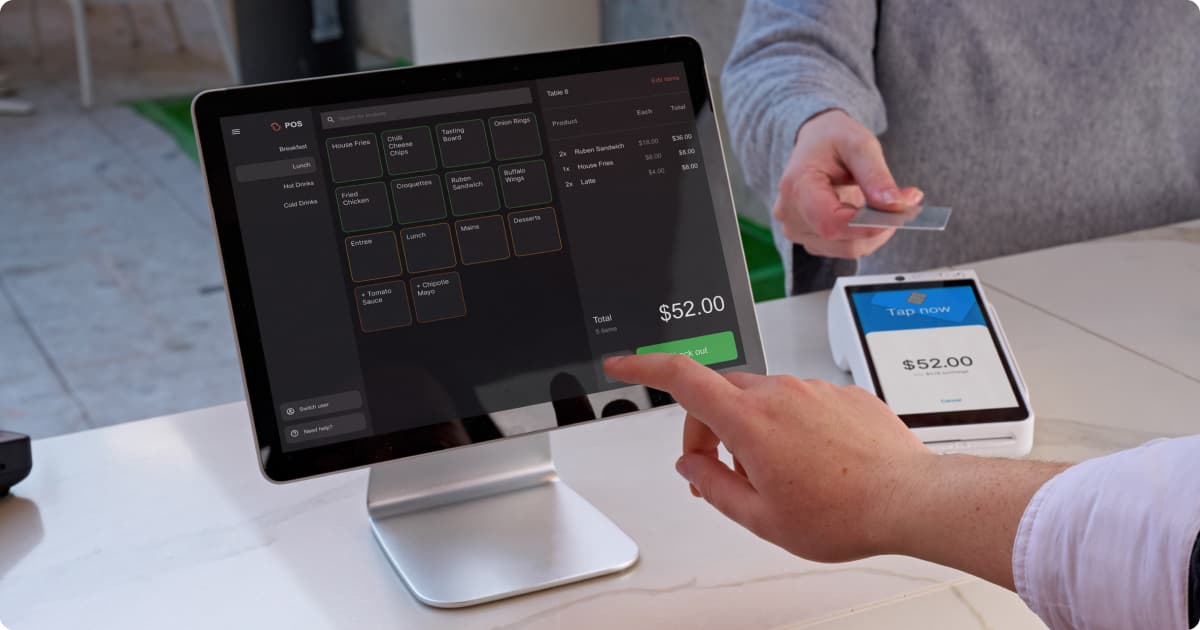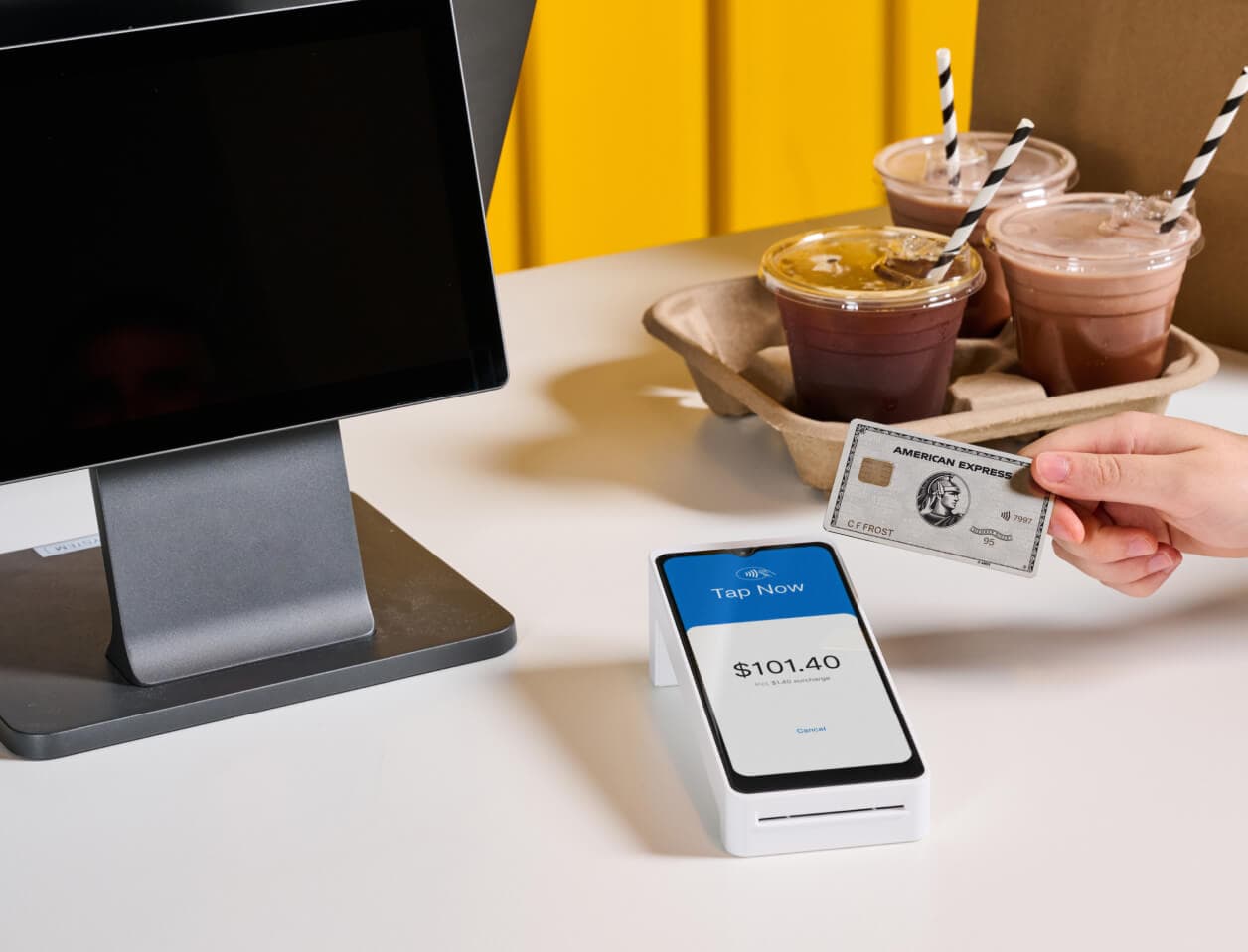
- EFTPOS & Point of Sale Solutions
Cloud vs. On-Premise POS: Understanding the Differences
Know how to choose the right point-of-sale system for your business.
Since James Ritty revolutionised the transaction experience in 1879 with his invention of the very first cash register, the point-of-sale (POS) system has undergone innumerable changes over the past 140 years. But recent iterations are arguably the biggest shake-ups yet.
Traditionally, POS systems have been installed and run on a computer or server on the business premises — referred to as “on-premise”. This tried and tested setup has dominated the market since the early days of computerised cash registers. But with the advent of the internet, more and more cloud-based players have entered the scene, offering a system that is entirely decentralised and accessed online.
Whether you’re about to start a business or you’re considering upgrading your legacy POS system to a cloud-based one, read on to discover the key differences and factors to consider.
What is the difference between on-premise and cloud-based POS systems?
The principal difference between on-premise POS systems and their cloud-based counterparts is that the former is installed and run on a computer physically located on the business premises, while the latter is hosted on remote servers and accessed through the internet. Traditional POS systems (such as, Order Mate, H&L, Impos or SwiftPOS), come with hardware that must be stored in your shop or business, whereas cloud-based systems (like Lightspeed Retail, ZiiPOS, Abacus and Next Order) can simply be connected up to whatever device you choose to run them off — whether that’s an iPad, a touchscreen monitor or a desktop computer.
Despite these differences, the functionality is essentially the same – they manage your inventory, print receipts, and record transactions. Another term to be aware of is ‘mobile POS’ or mPOS. Essentially, if your POS terminal has wireless functionality, it’s a mobile POS. A mobile POS can be part of both cloud-based or on-premise systems.
With that context established, let's take a look at what sets cloud-based and on-premise POS systems apart.
Reliability & Support
Internet dependency is one of the biggest determining factors when choosing between a cloud-based or on-premise POS system. If your business is operating in a remote location or an area with a poor network, using a cloud system to its full potential will be near impossible. Most mainstream cloud providers will still offer functionality that allows you to continue to take payments while working offline — simply storing the transaction data locally on the device and syncing it once the internet connection is restored. However, this is designed more as an emergency solution than one to be relied upon. On the other hand, while on-premise systems work entirely offline, they are not insusceptible to internal network failures, power outages, or software errors. If this happens, you will most likely need a technician to come out and identify the root cause as the POS provider cannot connect to your system remotely. With a cloud POS, most system failures can be resolved remotely by contacting a support team — often on-call 24/7 — who can connect to your system to troubleshoot the issue. It is worth noting however, that if the cloud-based POS provider itself goes down, you will be inconvenienced for the time that it takes them to get it back up and running. Whatever you choose, ensure to review the service level agreement in detail. This will specify the uptime that the provider must maintain before offering compensation.
Security & Data
With cloud-based systems, point-of-sale data—information pertaining to inventory, pricing, sales, customers, employees etc. — is encrypted and hosted in secure data centres with sophisticated security protocols and consistent monitoring. This means that even if you experience an issue with your local device, your business is at minimal risk of data loss or breach. What’s more, data backups are conducted automatically and regularly, so if the system were to crash, the data could easily be restored. Locally-hosted systems on the other hand, have a comparatively higher risk of losing data. The server is vulnerable to physical disasters — such as flood, fire, or theft — as well as system crashes or software bugs. Data can be downloaded and backed up for safety, however this is a time-consuming process that would need to be done regularly. If however, your business deals with sensitive information that simply cannot be shared with a third party, the on-premise system is advantageous as it gives you complete control. On-premise servers are not accessible to those outside the network, so your data is restricted from anyone other than authorised personnel. It is worth noting that if you do choose a cloud-based system, ensure to review the policy surrounding data retention and ownership: if you ever choose to terminate the agreement, you’ll want to be sure you can still access the data — both legally and operationally.
Integration & Customisation
It will come as a surprise to no one that cloud technology is becoming the norm. From Zeller’s payment gateway to Xero’s accounting software and Shopify’s e-commerce platform: the whole trading ecosystem is migrating to the cloud, which affords easier and faster integrations between each service. One of the greatest advantages to using a cloud-based POS is therefore its ability to incorporate additional features, modules, tools, updates or connections by integrating with third-party software even after the initial setup. Integrating EFTPOS payments with your POS system, for example, eliminates the need to manually key in the price onto the machine, streamlining the checkout process and reducing human error. See whether your choice of POS integrates with Zeller EFTPOS Terminal.
That being said, on-premise systems still remain relatively competitive with their cloud counterparts on this point due to the level of control that these systems offer. The interface, functionality or features of an on-premise POS can be modified in ways that a lot of off-the-shelf cloud solutions cannot. Once an on-premise system has been configured, however, any further changes will require you to call in extra technical support for an added cost. Cloud-based POS therefore gives users much greater flexibility and room for growth.
Hardware
When it comes to the physical equipment used in your POS setup, cloud-based systems offer the benefit of being run from consumer-grade devices such as iPads or iPhones, laptops, desktop computers, tablets, nor smartphones. The beauty in this is that businesses can quickly and easily scale up their operation by simply buying a new device from a highstreet retailer. Businesses can also match the hardware to their aesthetic and, thanks to the mobile nature of these devices, serve their customers from anywhere in their space. Traditional POS systems on the other hand are hamstrung by the fact that they also have to function as a server to store the data. As such, they are typically large and bulky and often, on-premise software providers will only work with specific hardware.
Updates
Like with any computer program, POS systems require regular updates to ensure the application or software runs smoothly and securely. Cloud-based systems benefit from automatic updates that take place frequently and in real-time so business owners can be sure they are always using the latest version of the software. Traditional POS systems however need to be updated manually by qualified technical support staff and cannot be used while the update is in progress. As such, these systems are updated infrequently or after hours.
Accessibility, Scalability & Setup
With a completely online cloud-based system, getting set up is a fast, straightforward process. No software installation is required, it’s simply a matter of signing up online or over the phone (the provider may perform a background check), then downloading the POS application to whatever device you’d like to use it on. By contrast, locally hosted POS systems typically cost a setup fee and require a trained engineer to install the equipment, customise the software to your needs and connect it to your computer network.
Being able to log into the cloud from any 3G, 4G or WiFi connection means that business owners or staff can remotely make changes, push updates or promo codes, or relocate their operation to an entirely different location. For an operation using on-premise POS, updates can only be made at the physical location where the server is housed and if your business decides to relocate or open up additional locations, it’s a time-consuming and expensive endeavour. Scaling up requires the purchase of new hardware and software licences, as well as getting another technician out to install the system.
Cost & Pricing
Finally—and arguably most importantly—what is the cost of a cloud-based POS compared to an on-premise POS? While it’s near impossible to provide a definitive answer due to the variability in business sizes and requirements, there are some general rules of thumb.
Due to the specialised hardware setup associated with on-premise solutions, the cost is considerable and upfront. Ongoing costs for this type of system include periodic maintenance, updates or re-installation in the event of a system crash, all of which will be provided for a fixed fee. A cloud-based system on the other hand has comparatively low upfront costs and is typically available as a monthly or annual subscription plan (great for managing cash flow). The cost is all-inclusive so, aside from the hardware — which is purchased independently — there are no additional charges.
The price of the subscription however will vary according to the size of the business and volume of transactions, so for larger businesses, a cloud-based system can sometimes turn out to be more expensive in the long run. However, with the flexibility to add or remove users, devices, locations or features as needed, a cloud-based system can also ensure that you only pay for what you need.
The consensus: Cloud or on-premise POS?
For small business owners just starting out, a cloud-based POS such as Lightspeed, ZiiPOS, Abacus or Next Order will likely provide more than enough functionality and will allow you to scale your operation in the most cost-effective way. For larger, established businesses, you’ll need to weigh up the reliability of your internet connections, how sensitive your data is, what third-party services you use, how complex your operations are, what hardware you want to use and whether or not you need remote access to your POS. It will soon become clear what service will work best for your business and which will offer you a better return on investment. If it looks like on-premise POS is the way to go, Order Mate, H&L, Impos or SwiftPOS are great places to start.
Weighing up the options? Speak to Zeller Sales — we can help you find the right POS system for your business, and integrate it seamlessly with Zeller Terminal.



